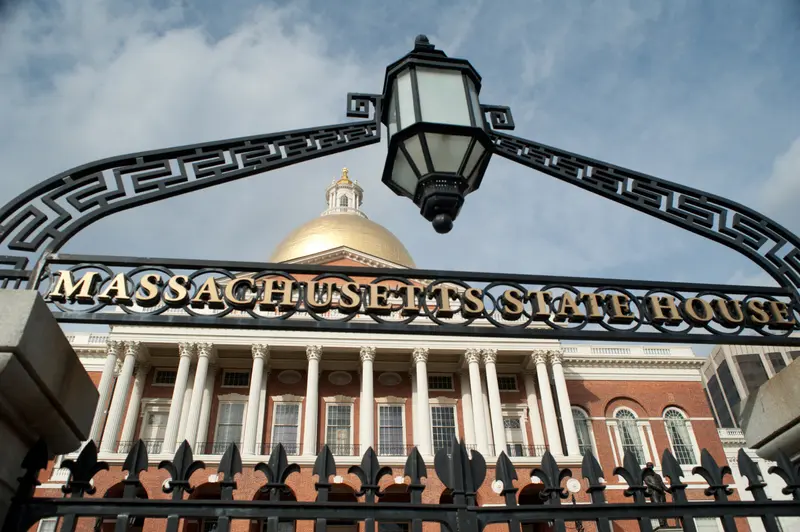Massachusetts housing officials announced Friday that they are launching a “90-day push” to reduce the number of vacancies in state public housing by the end of the year.
The initiative comes after an investigation by WBUR and ProPublica found nearly 2,300 of 41,500 state-funded apartments were vacant at the end of July — most for months or years — despite a housing shortage so severe that Gov. Maura Healey called it a state of emergency. Massachusetts is one of only four states with state-subsidized public housing, and about 184,000 people are on a waitlist for the units. Massachusetts also has federally funded public housing, which is more common nationwide.
The state’s plan focuses on providing financial and other assistance to local housing authorities, which maintain and operate the apartments, to help fill units. The Executive Office of Housing and Livable Communities is “undertaking a new initiative to significantly reduce the number of state-aided public housing vacancies,” Fatima Razzaq, acting director of the public housing division, said in a memo. “We recognize the shared responsibility in tackling this challenge and are therefore initiating a 90-day push to assist with reoccupying units.”
Chelmsford Housing Authority Executive Director David Hedison, who has complained that state policies for managing apartments hamper local agencies, said the new initiative shows the state is now committed to reducing vacancies.
“I’m thrilled,” he said. “It appears to me now that all hands are on deck and if there’s an issue, they’re going to be highly responsive.”
Among other measures, the state will help pay employee overtime costs for localities that have high vacancy rates and are approved for budget exemptions. It will also pay for contracting with other local agencies to assist with tenant selection and preparing units for new tenants.
In particular, Razzaq wrote, the state will closely monitor local housing authorities with vacancy rates above 10%. State housing management specialists will conduct weekly check-ins and provide technical assistance.
State housing officials will also visit local agencies where units are empty for more than 60 days — the amount of time the state allows local authorities to fill a vacancy — because they need certain types of repairs. As of the end of July, WBUR and ProPublica found almost 1,800 of the vacant units, including some with at least three bedrooms, had been empty for more than 60 days. About 730 of those have not been rented in at least a year.
Because the state pays local housing authorities to take care of the units whether they’re occupied or not, the vacant apartments translate into millions of Massachusetts taxpayer dollars wasted due to delays and disorder fostered by state and local mismanagement. Reasons for the vacancies include a flawed online system that the state created for selecting potential tenants, as well as underfunding for maintenance, renovations and staff.
The housing authority in Watertown, a Boston suburb, has six maintenance workers for 589 units. Michael Lara, executive director of the agency, said he plans to request additional maintenance staff as a result of the state’s initiative. The announcement shows that the state is “treating the situation seriously and with care,” he said.
In an interview with WBUR this week, Healey said she has asked Housing Secretary Ed Augustus to take the lead in fixing the problems and noted the state will centralize the screening process for people on the waitlist.
As WBUR and ProPublica first reported, the state recently hired a marketing firm to take over a portion of the applicant screening to try to speed up the process of filling units.
“Our public housing system is absolutely crucial to helping to solve our housing crisis,” Healey said in an interview on WBUR’s Radio Boston on Wednesday.
Healey also vowed to unveil a new bond bill with additional funding for public housing, but she declined to provide details. The state has estimated there is a $3.2 billion backlog of repairs needed in public housing. Some units are in such disrepair that they have been condemned or demolished.
In 2018, the Legislature allocated $600 million over five years for capital expenditures in public housing — not enough to catch up with all needed repairs.
House Speaker Ron Mariano said that the Legislature originally ordered the state to create a central waitlist to address concerns that some local housing authorities weren’t offering units to people fairly in order of who applied. But Mariano acknowledged the new system created “some inefficiencies,” making it harder for local housing authorities to find new tenants.
He said he was glad the administration is trying to improve the system.
“That’s what we need to do,” Mariano said at a news conference earlier this week. “We need to make sure that these local authorities have the ability to get in and get the apartments livable and ready.”
Still, Mariano seemed skeptical about some of the claims that local housing authorities need more staff and funding to repair units and fill vacancies.
“I’m sure that’s true in some cases. I’m sure it’s not true in other cases,” Mariano said. “It’s like any other need in a city or town.”
The Legislature approved a 16% increase in operating funds for public housing this fiscal year, allocating $107 million in total. But that’s short of the 100% increase some advocates had lobbied for. Healey had proposed keeping the funding at the same $92 million as last year.
On Thursday, Augustus met with Hedison, the Chelmsford housing authority director, and toured an empty building there slated for renovations. Hedison said the cost has ballooned after discovering additional repairs that need to be made, something he said is indicative of aging public housing. The average age of state-funded public housing is 57 years.
Hedison said Augustus acknowledged agencies need more money for repairs and is working on a bond measure.
“I want to see what it actually means,” Hedison said. “You know, show me the money. Show me the bond bill.”





